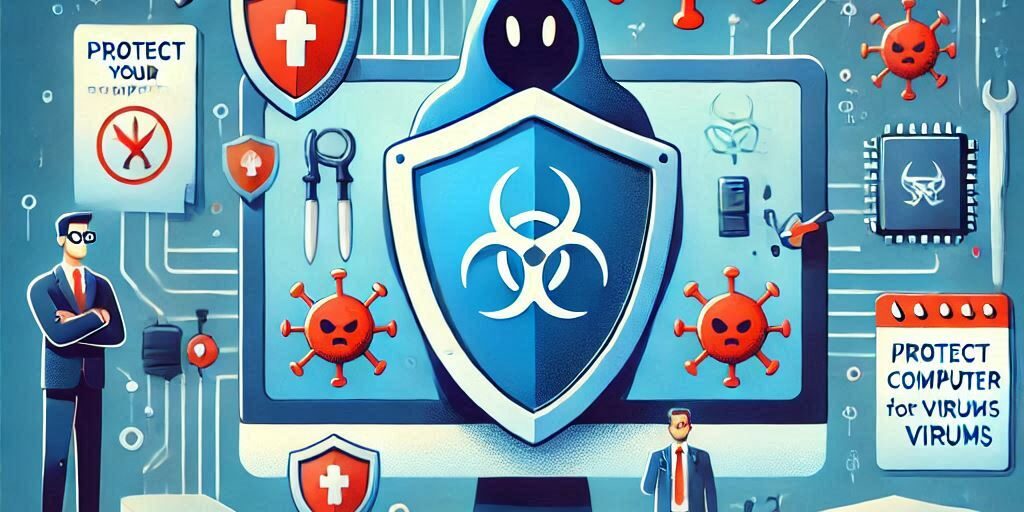You’ve just had your computer repaired, and it’s running like new again. But did you know that post-repair is one of the most vulnerable times for your device? Without the right precautions, your system could quickly fall victim to viruses or malware.
In this guide, we’ll walk you through the steps you need to take to protect your computer from cyber threats after a repair. By following these strategies, you can maintain your device’s performance, security, and longevity.
Common Risks After a Repair
When a computer is repaired, it often undergoes system resets, hardware changes, or reinstallation of the operating system. These processes can inadvertently leave your device more susceptible to cyber threats:
- Outdated Security Software: Repairs can reset or uninstall antivirus programs.
- Unsecured Networks: Post-repair testing might require connecting to untrusted networks.
- Increased Downloads: Reinstalling software or drivers can lead to accidental malware exposure.
Understanding these risks is the first step in fortifying your computer against potential attacks.
Essential Steps to Protect Your Computer
1. Installing and Updating Antivirus Software
The first line of defence for any computer is a reliable antivirus program. Here’s what you need to do:
- Choose Trusted Software: Opt for reputable programs like Norton, McAfee, or Bitdefender.
- Keep It Updated: Regular updates ensure protection against the latest threats.
- Run Regular Scans: Schedule weekly scans to detect and remove malware.
A strong antivirus program acts as a shield, blocking malicious files before they can harm your device.
2. Enabling a Firewall
A firewall monitors incoming and outgoing traffic, blocking unauthorised access to your computer.
- Windows and macOS Built-in Firewalls: Ensure they are enabled in your system settings.
- Third-Party Firewalls: For enhanced security, consider software like ZoneAlarm or Comodo.
Firewalls are especially critical if your repair involved resetting network configurations.
3. Avoiding Suspicious Downloads and Websites
Post-repair, you might need to reinstall software or drivers. Follow these guidelines to avoid malware-laden files:
- Download from Official Sources: Use manufacturer websites or trusted platforms.
- Verify URLs: Be cautious of lookalike websites with slight domain variations.
- Avoid Freeware: Free software often bundles adware or other malicious components.
Taking these precautions significantly reduces the risk of inadvertently introducing malware to your system.
Best Practices for Long-Term Protection
1. Regular Software Updates
Outdated software is a common vulnerability exploited by cybercriminals. To stay secure:
- Enable Automatic Updates: Keep your operating system and apps up to date.
- Update Drivers: Ensure all hardware components function with the latest drivers.
Updated software includes patches for known vulnerabilities, reducing your exposure to threats.
2. Using Strong Passwords and Authentication
Weak passwords are a gateway for cyberattacks. Strengthen your security by:
- Creating Unique Passwords: Avoid using the same password across multiple accounts.
- Using a Password Manager: Tools like LastPass or Dashlane can generate and store complex passwords.
- Enabling Two-Factor Authentication (2FA): Add an extra layer of security to sensitive accounts.
These measures help protect your personal information from being compromised.
3. Implementing Backup Solutions
Backing up your data ensures that even in the event of a malware attack, your files are safe.
- Cloud Storage: Services like Google Drive or OneDrive offer secure, remote backups.
- External Drives: Store backups on a physical device disconnected from your computer.
- Set a Backup Schedule: Automate backups to occur weekly or monthly.
Regular backups safeguard your critical data, giving you peace of mind.
The Role of Professional Maintenance
Partnering with professionals like Perth Computer Experts can provide:
- Comprehensive Diagnostics: Ensuring no vulnerabilities remain after a repair.
- Security Enhancements: Installing advanced security measures tailored to your needs.
- Ongoing Support: Helping you address any issues that arise post-repair.
Professional services provide an added layer of security, ensuring your system is robust against threats.
Conclusion and Call to Action
Protecting your computer from viruses and malware after a repair is essential for maintaining its performance and security. By installing antivirus software, enabling a firewall, and following best practices, you can minimise the risk of cyber threats.
If you’re unsure about the steps or need expert advice, our team at Perth Computer Experts is here to help. We offer comprehensive post-repair services, including security enhancements and personalised guidance.




